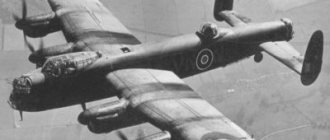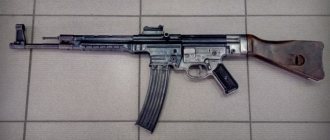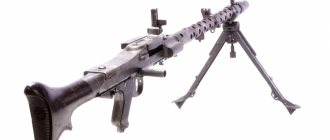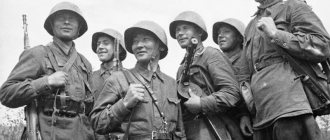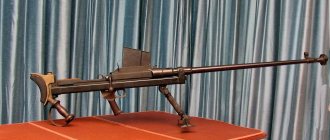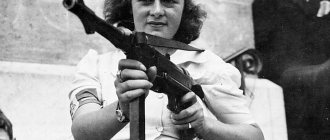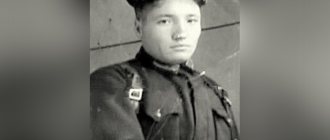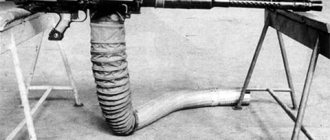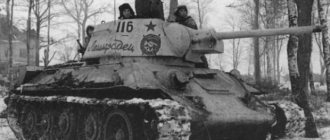History of creation
The Wehrmacht needed a new machine gun in the 30s of the last century, when a 7.92X33 mm caliber cartridge was developed, which was adapted for firing at a distance of up to a kilometer. To gain an idea of the characteristics of the new type of weapon, research began in 1935-37. The Wehrmacht Armament Directorate received ideas about a new means of combat, which differed significantly from existing ideas. This is how the concept of light automatic weapons emerged, capable of replacing rifles and light machine guns.
StG 44
Two contracts for the development of prototypes were presented to the design teams of the Magdeburg company Polte, which created the transition cartridge:
- Haenel;
- Walter.
The prototype was called Maschinenkarabiner 1942 or MKb 42.
In the spring of 1938, a contract was signed with Hugo Schmeisser to develop a new system, literally a heavy submachine gun. The prototype was handed over to the commission at the beginning of the 40th. Later, Erich Walter's company received a similar order, and by 1941 the first sample was provided for testing.
Firing was carried out at the Kummersdorf training ground, where the Walter system received a good rating, but modifications continued throughout 1941. In April of the following year, two systems were presented to Hitler, and comprehensive testing began in various units. The shooting showed that soon all the shortcomings will be eliminated and it will be possible to begin deliveries to armament.
Production was supposed to be increased up to 15 thousand per month by the spring of 1943 and maintained at this level. However, the commission made new amendments to the requirements, which slightly delayed the launch date. It was necessary to install a lug for the bayonet and a mount for the rifle grenade launcher.
StG 44 disassembled
In the fall of 1942, the MKb42(H) aufschießend model appeared; the bolt, butt and sights were changed. This was followed by a comparative test of the MKb42(H) and MKb42(W) with the Kar.98k.
Based on the results of the checks, it turned out that the Henel design is characterized by greater mass and bulkiness, but is as simple and unpretentious as possible. The ease of assembly/disassembly and long line of sight were noted.
The production started poorly, and for a long time it was not possible to reach the planned capacity. Only support from the Ministry of Armaments saved Sturmgeier Haenel.
A series of front-line tests were carried out, in which the two systems were also compared. In practice, the Henel machine gun proved to be more reliable and simple, but less balanced. Schmeisser's design was again preferred, but modifications were required.
The commission demanded that the following points be addressed:
- the trigger mechanism was supposed to be taken from a Walther machine gun, since it showed better accuracy when firing single shots;
- modify the sear geometry;
- install a flag fuse;
- shorten the length of the gas chamber tube;
- instead of a window for the release of residual gases, drill holes with a diameter of 7 mm, which would increase reliability in field conditions;
- modify the bolt and frame with a gas piston;
- remove the mainspring guide bushing;
- remove the bayonet lug, which turned out to be unnecessary thanks to the creation of a new method for attaching a grenade launcher;
- simplify the butt.
It is worth noting that it was not only Walter who fought for the state order with Hennel. For example, there was an attempt to conduct comparative tests with the FG42, however, they were disrupted due to production problems. By the end of 1943, the first prototypes of the G 44 assault rifle (Gewehr 43), a semi-automatic rifle, appeared.
German special forces equipment set
In 1943, the name of the new weapon was changed several times, and changes were made to the design. As a result, the Henel layout became a priority, which was carried out until the last modernization in the fall of ’43. Then it was decided to change the design to install a grenade launcher. Afterwards, changes were not made until the end of World War II.
The machine gun was adopted for service in 1943; it began to be supplied to the troops under the brand name MP 43.
Some upgrades that increased the reliability and ease of handling of the German World War II assault rifle were introduced at the end of 1943 after a final discussion between the developers and the leadership of the Armament Directorate.
The following year the name of the weapon changed to MP 44, and later to the final one - StG 44.
Start of production
The history of the production of the German assault rifle STG 44 begins with the conclusion of an agreement between the Armament Directorate and the company CG Heanel, owned by Hugo Schmeisser. According to the contract, the arms company was to produce an automatic carbine chambered for a new intermediate cartridge. The MKb rifle became such a weapon. In 1940, the first samples were handed over to the customer. Walther also received a similar order. Two years later, both companies submitted their samples - models MKbH and MKbW - for Hitler's consideration. The latter (MKbW rifle), according to experts, turned out to be too complex and “capricious”. The device provided by CG Heanel was considered the best. This type of rifle is characterized by: robust design and high tactical and technical characteristics. In addition, the reliability, durability of the weapon and ease of disassembly were appreciated. In the documentation this model is listed as MKb.42. The Minister of the Wehrmacht Armament Office, Albert Speer, put forward a proposal, after making some design changes, to send several of these samples to the Eastern Front.
Device and layout
This is an automatic weapon using a gas engine with a long piston stroke.
The receiver was stamped and made from sheet steel. A similar method was used to produce trigger housings, which were fixed on the receiver using a hinge, along with the handle.
Pistol shaped handle.
When disassembling the weapon, the described unit folds down and forward.
The wooden stock with the spring was detached after pressing out the transverse pin, which was assembled on the spring.
Nutrition
Ammunition is supplied from a double-row sector magazine, which holds 30 rounds. The drawback was the weak springs, which did not provide proper ammunition feed when fully loaded. 25 rounds were considered optimal.
Comparison of StG 44 and AK - partial disassembly
To solve this problem, magazines with 25 charges were developed, but they were produced in limited quantities. Later, a stopper simply appeared, which limited the capacity to the optimal value.
To connect the magazine, you had to press a push-button release.
Automation
The automatic operation of the assault rifle is built on a gas exhaust system, in which gases escape through a hole in the barrel wall. Due to the tilting of the bolt along the vertical axis, the barrel bore is locked. The mechanism of this process works through the interaction of inclined protrusions on the frame and the bolt. The gas chamber is unregulated; its plug is removed only for maintenance. The gas piston and rod are connected to the bolt stem.
Stock and recoil spring
A return spring is installed inside the butt, which made creating a folding model more difficult.
USM
The trigger trigger allows combat with single shots and automatically. A mode translator is located on the trigger box; from the outside it looks like a knurled button that moves in one plane. Automatic shooting is designated - D, single - E.
Below the translator there is a safety lever; in position F it blocks the trigger.
Trunk
The length of the machine gun barrel is 419 mm, which is sufficient considering the effective combat distance - more than 800 meters.
Initially, the machine gun was supposed to fire rifle grenades; for this, a thread was cut at the end of the barrel. It made it possible to install a flame arrester and a grenade launcher. However, the latter were quickly abandoned, since this remedy turned out to be unpromising. A special nut was used to protect the thread.
The thickness of the barrel did not allow the installation of a grenade launcher from a military rifle, so it was decided to add a ledge on top of the barrel and remake the base of the front sight.
StG 44 device for fighting from cover.
Many devices were also developed for firing from cover, as well as covering the dead zones of armored vehicles. Tanks and self-propelled guns could not always operate under infantry cover; in this case, Allied soldiers easily destroyed the vehicles by getting close to them. In order to cover all non-shootable sectors through the existing loopholes, curved barrels were designed.
The following options were used:
- angle 30 degrees;
- 45;
- 90.
It was the latter that were used on armored vehicles, but they were distinguished by a minimal resource - about 2000 shots, after which the accuracy dropped noticeably.
For infantry, 30- and 45-degree nozzles were used. The latter quickly became unusable, so only the former appeared in later tests.
Post-war time
Nazi generals paid a lot of attention to the topic of the German assault rifle STG 44 in their memoirs. Despite the lack of ammunition, the weapon performed at its best. Even after the end of World War II, the first German assault rifle STG 44 is not forgotten. Until 1970, the model was in service with the police and army of both Germany itself and several other Western countries. According to some information sources, during the conflict in Syria, both warring parties used German STG 44 assault rifles.
Specifications
In almost all respects, the new development bypassed the army systems of that time.
| Characteristic: | Meaning: |
| Weight, kg | 5,2 |
| Weapon length, mm | 940 |
| Initial bullet speed, m/s | 685 |
| Sighting range, m | 600 |
| Rate of fire, rds/min | 500-600 |
During the development, the experience of all predecessors was taken into account, however, the creation of a new type of systems for warfare required the introduction of innovations. As a result, the machine turned out to be successful for its time, although it had many weaknesses.
Initial bullet speed
The initial bullet speed was 685 m/s.
Cartridges and caliber
The 7.92X33 cartridge had reduced power compared to a similar rifle cartridge. This allowed us to reduce the impact by half. Bullet weight 8.1 grams, cartridge weight 16.8.
Gun grenades were thrown using special cartridges:
- for fragmentation - 1.5 gram powder charge;
- for armor-piercing cumulative - 1.9 g.
The cartridge is called a transition cartridge because it is larger than a pistol cartridge, but smaller than a full-size rifle cartridge.
StG 44 with 90 degree barrel bend
Dimensions, weight, length
From the very beginning there were complaints about the size and weight of the weapon. Without a magazine, the machine gun weighed 4.78 kg with a total length of 940 mm.
Store capacity
Three versions of automatic magazines were produced: 15, 20 and 30 rounds.
Firing range and lethal force
The sight is sector-specific, designed to conduct aimed fire up to a distance of 800 meters. For this purpose, notches are applied to the bar, each of which corresponds to an increase in distance by 50 meters. However, the usual distance for effective combat was 600 meters.
The front sight and slot are triangular
If necessary, it was possible to install infrared and optical sighting devices. Most of the modifications, starting in 1943, were equipped with guides for fixing optics.
All early models were supposed to be equipped with ZF4 sights, but later they needed to be redesigned for ZF41. Weapons with sights were not used en masse, as they were not reliable enough to maintain the set position for a long time. However, all models have a bar for installing them.
The muzzle energy of the shot was 1880 Joules. This indicator allowed the bullet to maintain destructive power at distances of more than a kilometer.
About ammunition
Cartridges numbering 30 are contained in a detachable sector double-row magazine. Wehrmacht soldiers equipped their rifles with 25 cartridges. This was explained by the presence of weak springs in the stores, unable to ensure a high-quality supply of ammunition. In 1945, a batch of magazines designed to hold 25 rounds was produced. That same year, German designers invented special locking devices that limited equipment to 25 rounds of standard magazines.
Combat use
The first use of the MP 43 was full-scale military testing by the fifth Viking tank division (Eastern Front). It turned out that the weapon significantly increased the firepower of the soldiers, to the point of reducing the need for mobile machine guns.
Captured StG 44
Machine guns were supplied to arm the best units of the Nazis, like the Waffen-SS. In the post-war years, the weapon was used by the GDR barracks police and Yugoslav paratroopers.
The production was carried out by Czechoslovak and Argentine factories.
In 2012, information appeared about the use of weapons by units of the Syrian opposition. Before this, they were used by regular troops of the state.
During World War II, there was a constant shortage of ammunition for machine guns, which significantly limited their distribution. They were used en masse at the final stages of the confrontation, when they could no longer make a significant contribution to the course of hostilities.
Introduction to weapons
The STG 44 assault rifle (Sturmgewehr 44) is a German assault rifle created during the Second World War. In total, German industry produced 450 thousand units. According to experts, the German assault rifle STG 44 is the first mass-produced model of assault rifles. Compared to submachine guns used during the war, the rifle has an improved firing rate. This became possible thanks to the use of more powerful ammunition in the German STG 44 assault rifle (photo of the weapon is presented in the article). Such a cartridge is also called “intermediate”. Unlike pistol cartridges used in pistols and submachine guns, rifle ammunition has improved ballistic properties.
Advantages and disadvantages
The main disadvantage of the design was its weight; with ammunition, the weight reached 5.2 kg. The soldiers complained about inconvenient sighting devices and the lack of a flash suppressor. Because of the latter aspect, especially in the dark, the flash that erupted during firing instantly revealed positions.
Combat use of StG 44
Otherwise, it was an excellent, reliable and unpretentious weapon. If necessary, the weapon could be easily cleaned in the field using a standard set of maintenance tools. For this purpose the following were supplied:
- tools for unscrewing the gas chamber;
- removing the trigger lever guard;
- pencil case with a brush.
In addition, the kit included spare parts from among the most vulnerable, such as the extractor and its springs.
During all inspections, experts noted the high accuracy of the machine.
In the post-war years, the requirements for the system became more stringent, so a reassessment of the machine’s characteristics made it possible to identify more shortcomings. For example, the receiver, which was produced by stamping and had low strength indicators, was considered unreliable. It was noted that the original design was greatly simplified, which was due to the difficult situation at the fronts and the need to save on everything.
StG 44 with night vision device
Firing in long bursts adequately from this system was impossible, since it was not possible to effectively hit targets. Experts have come to the conclusion that this combat mode is not needed at all for the MP 44, due to its uselessness.
It is noted that all the negative aspects are associated with the military doctrine of that time. Simply, the optimal requirements for the new class of weapons had not yet been formed, so engineers often had to combine contradictory design solutions.
The lack of a forend also had a negative impact on ease of handling.
What was improved in MKb.42?
- The trigger was replaced with a Walter trigger system. According to experts, such a replacement will have a beneficial effect on the accuracy of combat during single shooting.
- Changes affected the design of the sear.
- The rifle was equipped with a safety catch.
- The gas chamber tube was shortened and equipped with 7-mm holes designed to allow the remaining powder gases to escape. Thanks to this, difficult weather conditions are no longer an obstacle to using the rifle.
- The guide bushing was removed from the return spring.
- The tide for mounting the bayonet was abolished.
- The butt design has been simplified.
About sights
The German rifle is equipped with a sector sight, which ensures effective shooting at distances of no more than 800 m. The sighting bar is equipped with special divisions, each of which is equal to a distance of 50 m. The slots and front sights in this model of weapon are triangular in shape. Options for rifles with optical and infrared sights were not excluded.

